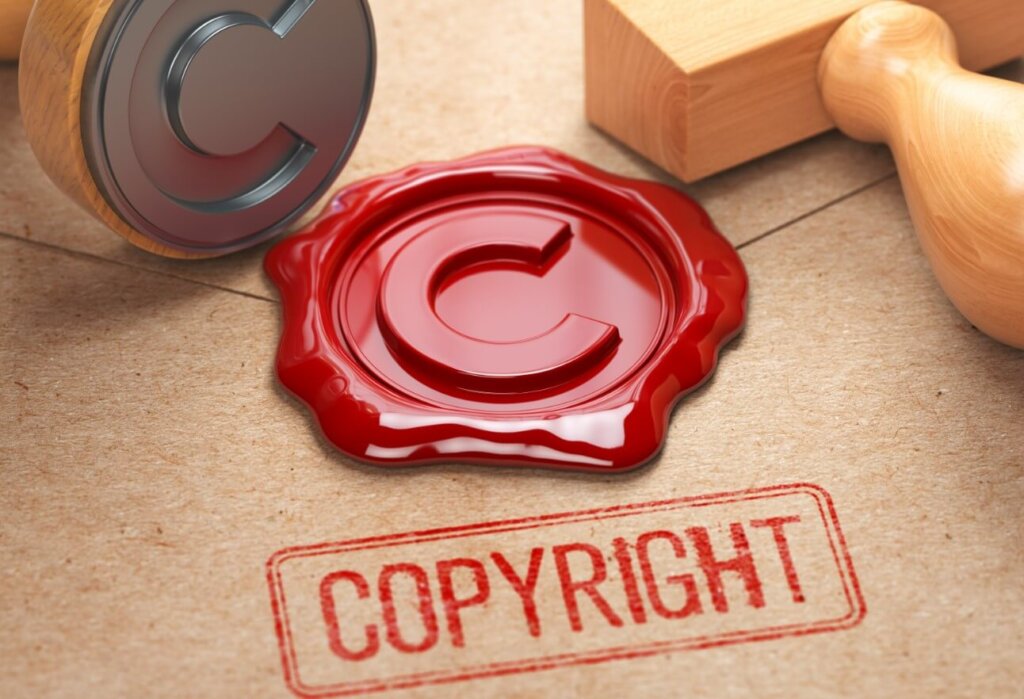Thankfully, clients are always asking us questions. For example, a client might ask, “Can I copyright this video?” or “. . . this photograph?” or “. . . this hat design?” We hear about disputes over music copyrights and copyrighting songs in entertainment news all the time. As IP lawyers, we understand what our clients are asking (and even occasionally, we understand what those entertainment news reports claim to be about) but we do so with a little bit of a cringe. Most think that to obtain a copyright you must do something in addition to chronicling the creative work. Not true.
SOME HISTORY
This view of “copyrighting” appears, at least to us, to be a holdover of what copyright law used to be. Before 1989, when the U.S. joined the Berne Convention (an international treaty on copyright law), U.S. copyright law required that in order to obtain a copyright, the “work” had to be registered with the U.S. Copyright Office. This was a formal requirement – and an affirmative act was required to obtain a copyright in an original “work.” By the word “work,” we mean a song, a painting, sculpture, jewelry, or anything having some “artistic” expression. By “work” we do not mean “any idea, procedure, process, system, method of operation, concept, principle, or discovery”. 17 U.S.C. §102(b). Copyright is not intended for the latter.
The Berne Convention introduced the notion that a copyright exists the moment a work is “fixed,” rather than requiring a formality such as registration. A copyright in a work comes into existence the moment the work is created. In order to be part of the Berne Convention, U.S. law had to be revised to comply with this provision (and a few other provisions) of the Berne Convention. The Berne Convention requires no formalistic procedures to obtain and maintain copyright rights.
In other words, the Berne Convention requires member countries to recognize that a copyright comes into existence automatically. What does automatically mean here? 17 U.S.C. §102(a):
“Copyright protection subsists, in accordance with this title, in original works of authorship fixed in any tangible medium of expression, now known or later developed, from which they can be perceived, reproduced, or otherwise communicated, either directly or with the aid of a machine or device”
When your client writes song lyrics, paints a painting, chisels a sculpture, or assembles jewelry, the copyright comes into existence automatically. These are all situations where the work is a “tangible medium of expression” (which also includes computer memory).
A “tangible medium of expression” is NOT a live performance, such as a baseball game or live concert. In contrast, a recording of that baseball game or live concert is a work “fixed in a tangible medium of expression.” Before the advent of smartphones, most venues prohibited video and/or audio recordings (and some still do) because the person recording is the copyright owner of that recording! With virtually everyone having a smartphone at concerts, most performing artists/venues have essentially given up policing attendees making video/audio concert recordings, although the creation of smartphone camera controls (read: lock camera off) may eventually be technically possible in concert venues.
SO WHY REGISTER?
If the existence of copyright is automatic, then why register? Doesn’t the existence of a registration procedure cause confusion? A major reason for registration involves enforcement and evidentiary value. Registration defines what the “work” is and provides a presumption that the registrant is the owner of the copyright. For such reasons, before a complaint can be filed for infringement, it is mandatory that a registration be obtained. Fourth Estate Public Benefit Corp. v. Wall- Street.com, 586 U.S. ___ (2019).
Another reason to register is that actual damages in most copyright infringement cases may not be sufficient to support the expense of litigation. If a copyright registration is obtained within three months of the publication of the work then the federal copyright statute provides for statutory damages. 17 U.S.C. § 412. Registration is also important to stop counterfeit goods, both from importation and from internet sales.
The copyright registration can be registered with U.S. Customs, which will then seize goods that are within the scope of the registration. Copyright protection can stop both the use of copied images on a website and sometimes even the sale of the actual goods. Copyright registration in this situation is not necessary. However, a registered copyright makes it easier to assert the client’s rights.
SHOULD A CLIENT REGISTER EVERYTHING?
No! Register what’s important to protect the client’s revenue streams. Registration is usually simple. The U.S. Copyright Office explains the process in great detail on its website: www.copyright.gov. For those works that are not submitted for registration, it is a good idea to store a physical copy or a pdf of the work in the event that registration may be necessary in the future. Peter Sawicki James L. Young








